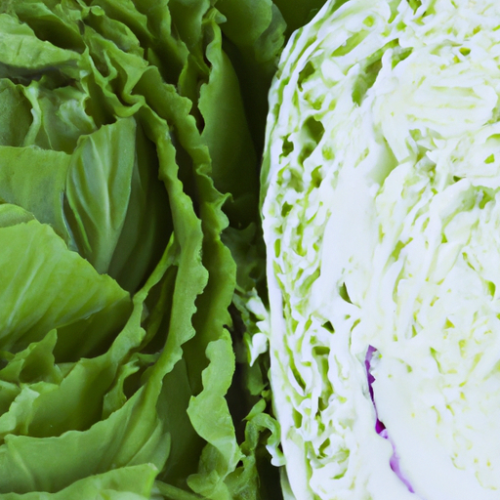Lettuce and cabbage closely resemble each other. As a matter of fact, they both are green and have many layers of leaves intact. However, the two vegetables have their similarities and differences. These vegetables have the same nutrients and they are healthy and delicious. Cabbage is one of the vegetables that we encounter on daily basis in restaurants and our kitchen. It’s used for several culinary purposes. It’s eaten raw as salads but it can as well be heated, steamed, served with beef stew or even braised. One thing you definitely didn’t know is that cabbage, Broccoli, and Cauliflower belongs to the same genus Brassica. The cabbage has some tough leaves that soften when steamed or cooked. Just like Lettuce, Cabbage is packed with some major vitamins and nutrients which is reason why it’s always recommended for people with certain existing conditions. Lettuce comes from the latin word ‘’lac’’ that is used to describe milk. Unlike cabbage, lettuce belongs to a different family of plants Lactuca family. It is known to contain softer leaves and high water contents. Similar to other vegetables, it comes packed with many nutrients and vitamins. Given the two vegetables, it’s easy to think that they belong to the same family and group. It’s also very easy to think that they have no differences. To help you make a clear cut between cabbage and lettuce, we have listed top 10 main differences between these two vegetables.
So What is the Differences between Lettuce and Cabbage?
1. The nutrients and vitamins vary in different amounts among cabbages and lettuce
Although these two vegetables have almost similar vitamins and nutrients, they vary greatly in amount. They both contain high contents of nutrients, antioxidants and vitamins a reason why they are highly recommended for pediatric nutrition and other purposes.
2. They are different in appearance-
If you are keen enough, you will notice that lettuce and the cabbage are very different in terms of size, the toughness of leaves and several other dimensions. As a matter of fact, the cabbage has tough leaves and the leaves are compact together.
3. Water content
Lettuce has more water than cabbage. This is what makes its leaves softer than those of cabbage. Even when steamed or cooked, lettuce produces more water than cabbages. This is the reason why they vary slightly on the cooking methods.
4. Nutritional value difference-Cabbages and lettuce vary slightly in terms of their nutritional value. Cabbage on one hand is packed with vitamins, minerals and antioxidant properties that are very beneficial in the human body. Cabbage is also known to contain Sulforaphane compound that delays cancer of the breast and pancreas.
Additionally, Lettuce has fewer minerals than cabbages. Cabbages contain Magnesium, Iron, Manganese, phosphorus, Calcium and potassium.
5. Cabbage has twice the number of calories
When compared to lettuce; cabbage has twice the number of calories. As a matter of fact, the cabbage has about 25 calories while lettuce has about 14 calories. This is one of the main reasons why nutritionists conclude cabbage has higher nutritional value than lettuce.
6. Cabbage has a higher content of vitamin C than lettuce
According to studies; cabbage has about 60% of Vitamin C while lettuce has about 4% of the same vitamin. Cabbage also has higher quantities of other vitamins which is not the case with Lettuce.
7. Lettuce doesn’t have Vitamin B6
Another major difference is that lettuce doesn’t have Vitamin B6 which is found in cabbages in high contents. As a matter of fact, there are several other vitamins that are found in Cabbage but absent in Lettuce.
8. Cabbage contains more fiber content than Lettuce
In terms of fiber content, cabbage has a higher amount. This is the reason why cabbages helps in constipation and other related digestion problems. Additionally, cabbage contains Glutamin which gives it the inflammatory properties.
9. Differences in Texture and Taste-Another significant difference between these two vegetables is that they have different texture and taste. Cabbage on one hand has tough leaves and contains less water. For that reason, cabbage can be eaten raw, steamed or boiled. On the other hand, lettuce has a crunchy texture. This is what makes this vegetable perfectly fit for salads and baked foods.
When cooked properly, cabbage is very likely to offer a very delicious sweet flavor which compliments other foods.
10. Differences in growing condition-
Cabbage and lettuce are grown almost similarly but there are some differences in the growing conditions. Lettuce grows well in cooler conditions and it grows on loose sandy soil with a pH level of somewhere between 6-7.On the other hand, cabbage will prefer cooler environments.


